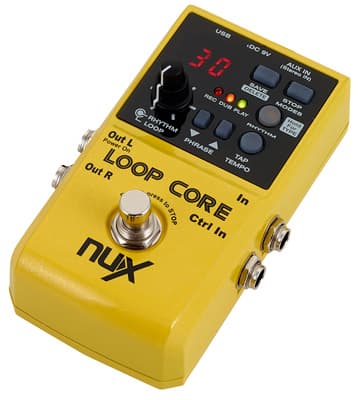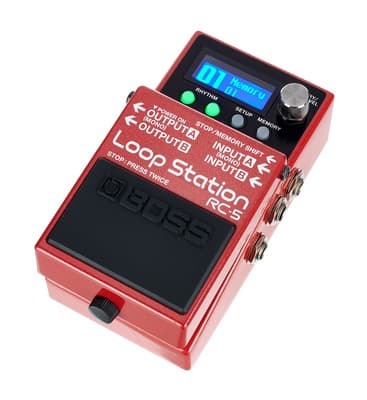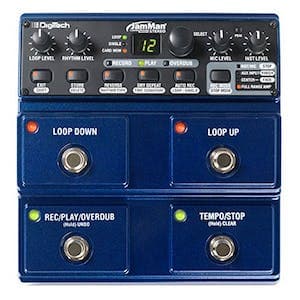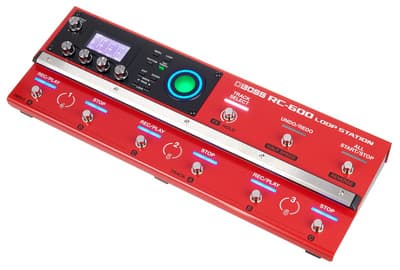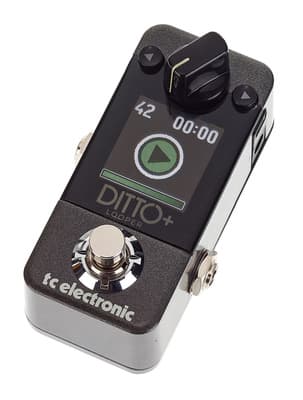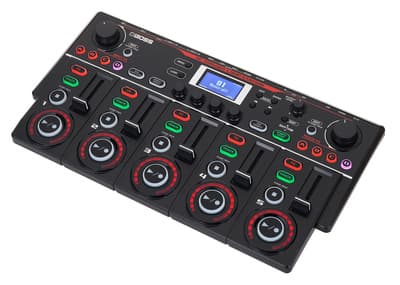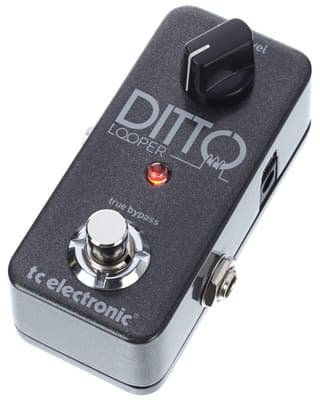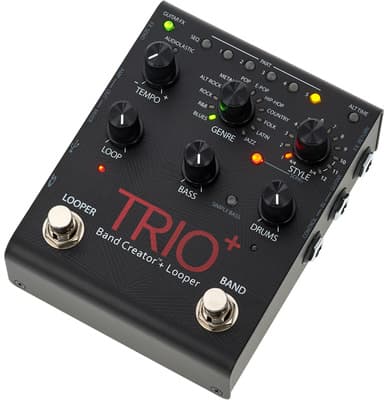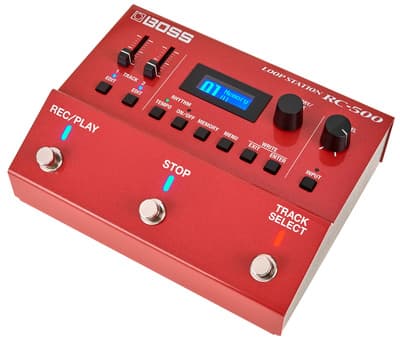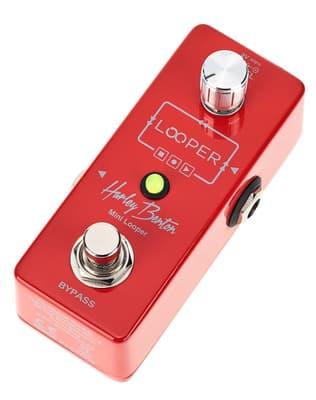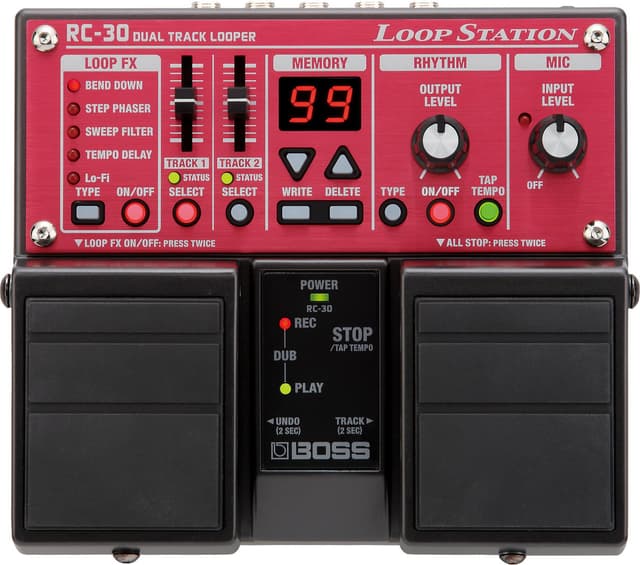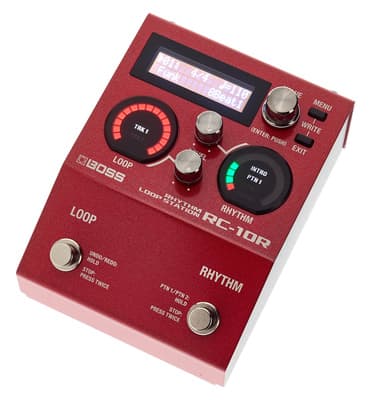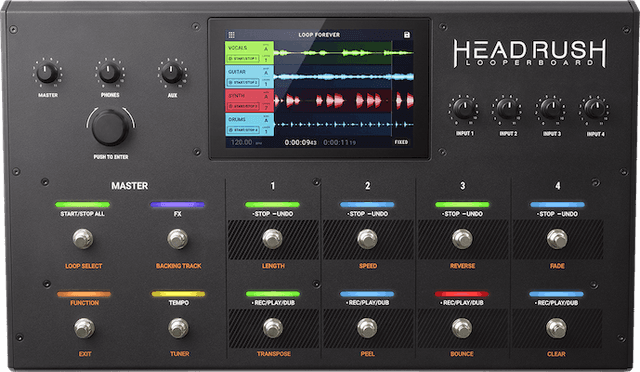Boss RC-300 Loop Station - Test & Review
Many consider this model as the flagship among the loop stations currently available on the market. If you're looking for a sophisticated, versatile Loop Station with a wide range of possibilities going beyond those of a simple looper, this review will be exactly right for you. But what makes the Boss Loop Station so special?
pdate: The Boss RC-300 is no longer available. If you want to learn more about the successor of the RC-300, take a look at our review of the Boss RC-600. If you want to buy the RC-600, simply click the links above.
Technical Details
Considering only its size, it is obvious that this Loop Station is more than just that. Measuring 536 x 231 x 76 mm and with a weight of 3,9 kg, the Boss Loop Station is everything but a small, handy toy. There is a row of 8 metal foot switches, an expression pedal, several buttons, a two-line screen and a few potentiometers. All in all, the manufacturing seems to be of a very high quality.
The stereo looper has 99 memory slots to store your own loops and creations, which provides you with over three hours of recording capacity. Via an USB port, the recordings can be easily transferred to a computer, and the computer can even be turned into an audio interface if required. It's also possible to connect a second RC-300, creating six audio tracks. Furthermore, the RC-300 has a rhythm accompaniment.
With three separate loop tracks, this model excels in its segment in comparison to many other models we know. The maximum number of overdub layers is only limited by the memory capacity. You can of course adjust all tracks individually and assort them to the different outputs. A headphone jack is also available. The looper offers a stereo input, an XLR micro input with switchable phantom power, an AUX mini jack input and a mono input. In theory, it is possible to connect even more controllers to the Loop Station, since a full MIDI trio (In, Out, Thru) is available. What's more is the possibility to attach additional switch or expression pedals via two foot switch connectors.
In Use
Don't let the numerous pedals and buttons confuse you. From our experience, the use of the Loop Station was easier than we first expected and also very intuitive. You can start, overdub and stop recordings with just one keystroke. However, because of the big amount of effects and parameters that can be set and adjusted internally, it takes a little practice to find the menu you are looking for. In preparation, we had to study the manual - but after a few weeks of using the device, we knew exactly how to work with it.
To go into all the effects and features of this Loop Station would push the limits of this review, but we would like to mention just a few of them anyway: There are voice effects, distortion effects, a bass simulator, echo for the guitar, and even an effect to transpose notes by up to twelve semitone steps (a whole octave). You are free to assign the effects to one of the three loop tracks, to the input or to one of three output variations.
Similar to other effect devices, the expression pedal can be used to seamlessly add filter effects such as distortion, delay and modulation effects guaranteeing a lot of fun when playing with different instruments and vocals and creating space for creativity.
Conclusion
In our opinion, the Boss RC-300 is the best Loop Station currently available on the market. The design is robust and solid, the handling is unexpectedly easy and it can be used in numerous ways.
Thanks to the amount of foot switches and adjustment options combined with the additional connection options, which make the RC-300 upgradeable in multiple ways, it is one of our absolute favourites in the premium segment.
The only weakness worth mentioning is that it is sometimes difficult to navigate the menu when it comes to particular effects. From our perspective, the price is justified as the device meets the highest demands. To navigate the menu might be overwhelming in the beginning because of the many different effects and setting options (for example rhythm accompaniment), but after a while it becomes manageable and then also perfect for live performances.
Update: The Boss RC-300 is no longer available. If you want to learn more about the successor of the RC-300, take a look at our review of the Boss RC-600. If you want to buy the RC-600, simply click the links above.
More reviews
Publish date:
Last updated:


